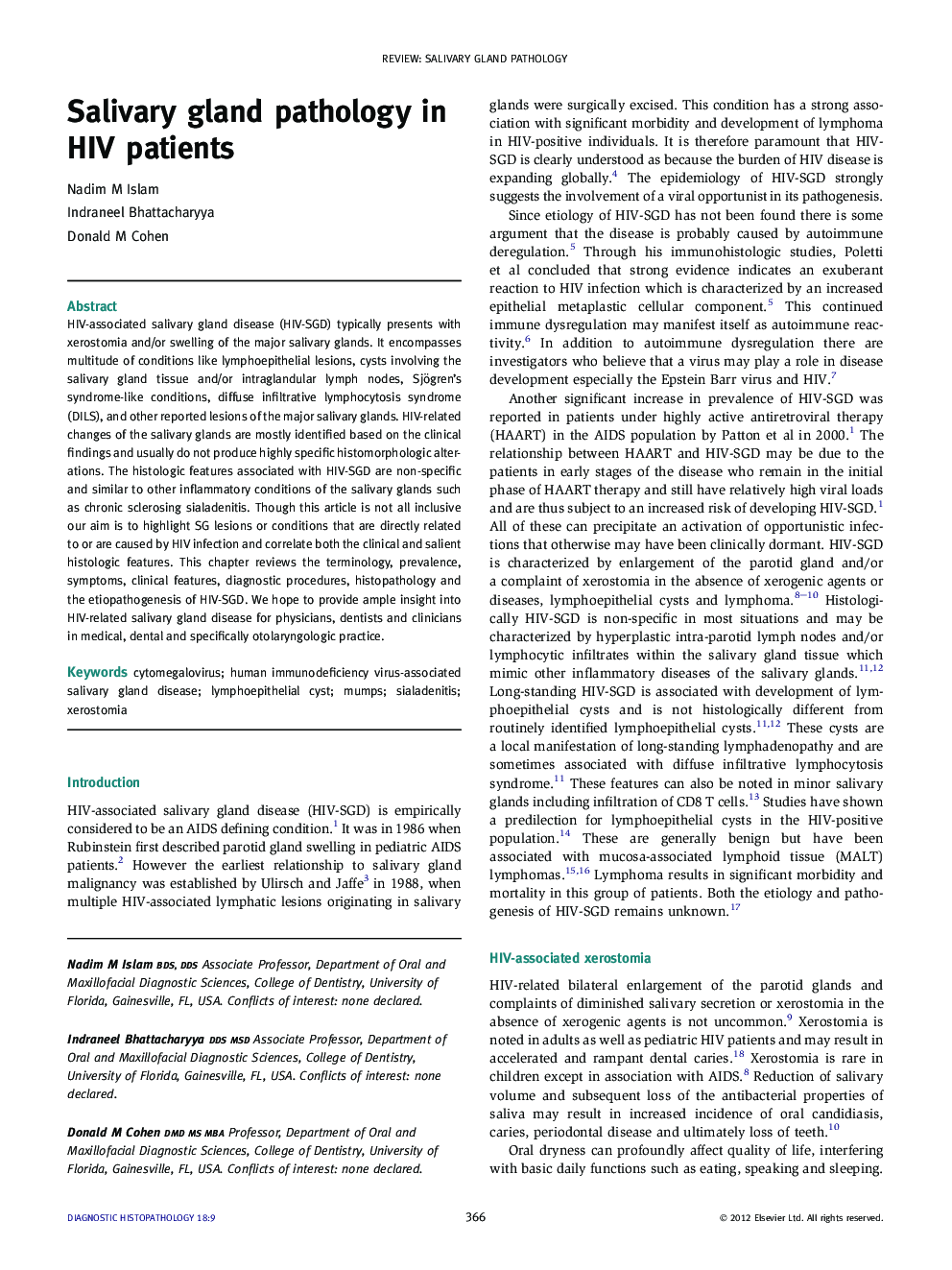| Article ID | Journal | Published Year | Pages | File Type |
|---|---|---|---|---|
| 4131291 | Diagnostic Histopathology | 2012 | 7 Pages |
HIV-associated salivary gland disease (HIV-SGD) typically presents with xerostomia and/or swelling of the major salivary glands. It encompasses multitude of conditions like lymphoepithelial lesions, cysts involving the salivary gland tissue and/or intraglandular lymph nodes, Sjögren's syndrome-like conditions, diffuse infiltrative lymphocytosis syndrome (DILS), and other reported lesions of the major salivary glands. HIV-related changes of the salivary glands are mostly identified based on the clinical findings and usually do not produce highly specific histomorphologic alterations. The histologic features associated with HIV-SGD are non-specific and similar to other inflammatory conditions of the salivary glands such as chronic sclerosing sialadenitis. Though this article is not all inclusive our aim is to highlight SG lesions or conditions that are directly related to or are caused by HIV infection and correlate both the clinical and salient histologic features. This chapter reviews the terminology, prevalence, symptoms, clinical features, diagnostic procedures, histopathology and the etiopathogenesis of HIV-SGD. We hope to provide ample insight into HIV-related salivary gland disease for physicians, dentists and clinicians in medical, dental and specifically otolaryngologic practice.
